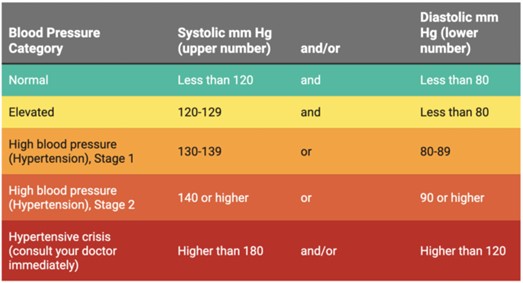Blood Pressure Matters
SLV Health
.png)
Contributed by Tylen Pavlovsky, PA-C, San Luis Valley Health.
Tylen joined SLVH in 2023 and is seeing patients in the General Surgery clinic and will be also assisting Drs. Grigsby and Snider in Cardiology. Tylen graduated from Centauri HS, completed a BS at Colorado Mesa University, and then Creighton University School of Medicine with his Physician Assistant degree. Read his full bio on the slvh.org website!
Nearly every medical encounter is sure to begin with a blood pressure reading. Most patients know that this is to be expected with each doctor’s visit, but recent studies have found that few people understand what those numbers actually mean, and even fewer know the recommendations for normal or healthy blood pressure. Because uncontrolled high blood pressure can have deadly consequences, this article seeks to help explain what those numbers really mean, outline current recommendations for healthy blood pressure, and share 10 tips for controlling blood pressure.
The Basics of Blood Pressure
Blood pressure is measured with two numbers, often the first number is a triple-digit number, followed by a double-digit number. The first number is your systolic blood pressure—this number is the pressure in your arteries when the heart is beating or squeezing blood out to the rest of the body. The second number is your diastolic blood pressure—this is the measure of pressure within your arteries during the resting or relaxation phase of the heartbeat.
Blood pressure is measured in units of millimeters of mercury, this is because the earliest blood pressure monitors looked at how far your blood pressure could push a column of liquid mercury.
Current Recommendations for Blood Pressure
Normal blood pressure is less than 120 mm Hg systolic and less than 80 mm Hg diastolic. Generally speaking, lower blood pressure tends to be better for patients.
The American Heart Association recently revised the recommendations and definitions for elevated blood pressure which can be seen below:

10 Tips for Healthier Blood Pressure
- Talk to your doctor about elevated blood pressure. An increase of 20 mmHg in systolic blood pressure or 10 mmHg in diastolic blood pressure, doubles a person’s chances of dying from a heart attack or stroke.
- Cutting back on salt is an effective way to lower blood pressure. The average American takes in about 3,400 mg of sodium (salt) per day, 50% more than the current dietary recommendations.
- Increased physical activity can help lower blood pressure. Doing something such as walking for 30 minutes each day can help lower blood pressure.
- Limit alcohol consumption. Regardless of the type of alcohol consumed, alcohol increases blood pressure. While it’s better to avoid alcohol, if you are going to drink, current dietary guidelines recommend 1 drink per day for women and no more than 2 drinks per day for men.
- Find a healthy way to manage stress—such as being active, meditating, laughing, getting plenty of sleep, or connecting with others. Increased stress results in increased cortisol production within the body which can raise your blood pressure.
- Stop smoking or vaping. Both smoking and vaping have negative effects on your heart and blood vessels. A recent study found that after just 12 weeks, individuals who had stopped smoking or vaping had lower blood pressure. Talk to your doctor for additional help in quitting smoking or vaping.
- Maintain a healthy weight—studies have found that losing even a few pounds can help lower your blood pressure.
- Take your prescribed medication—a recent meta-analysis found that lowering systolic blood pressure by 5 mmHg with medication can have a 10% risk reduction in major cardiovascular events.
- Eat a heart-healthy diet. Vegetables, fruits, whole grains, low-fat dairy products as well as skinless poultry and fish, nuts, and legumes are foods that promote heart health and can help reduce the risk of cardiovascular disease.
- Monitor your blood pressure—while many people may believe that they have elevated blood pressure only in the doctor’s office, that’s not always the case. Monitoring or checking blood pressure at home or in a comfortable environment can help determine if you really do have “white coat” hypertension.